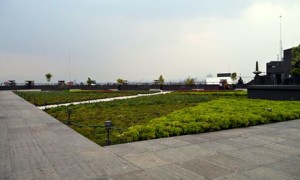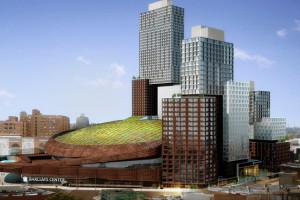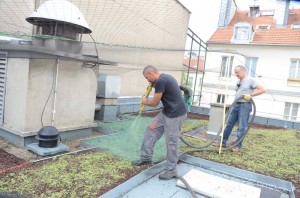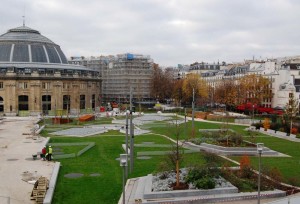by SAM JONES, theguardian.com, April 24, 2014

A garden on the roof of the environment secretary’s air-monitoring labs in Mexico City
Source: www.theguardian.com
Green roofs sprouting across Mexican capital not only purify the air but aid recovery of hospital patients, says environment chief.
In a sheltered corner of one of the greatest megacities on Earth, there is a place where lizards careen around tree trunks, butterflies drink nectar from vermillion flowers and hummingbirds whisk the heavy air with their wings.
Stand in the botanical gardens of the Bosque de Chapultepec (the Chapultepec forest) and listen carefully enough, and something remarkable happens: birdsong begins to pierce the groan of trucks and the screech of taxi horns from the long avenue that bisects the park.
The gardens are home to one of a growing number of azoteas verdes – or green roofs – that are springing up around Mexico City as part of the metropolis’s efforts to purge its air of the pollution that has long been among its least-desired claims to fame.
The azotea verde atop the circular single-story offices of the botanical gardens, is planted with hardy stonecrop, which can withstand the Mexico City summer, but which also produces oxygen and serves as a filter to draw out the carbon dioxide and heavy metal particles in the air. As well as providing the park’s squirrels with an arena in which to practise their parkour, the roof help regulates the temperature of the offices below and soaks up rainwater to keep the building dry.


